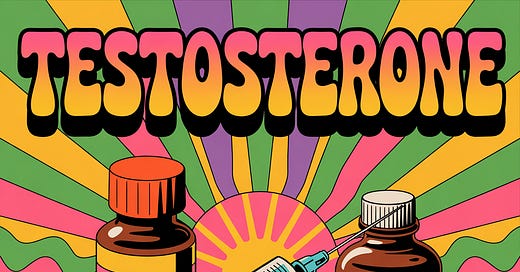Testosterone Therapy for Women: A Delivery Methods Deep Dive
Part 2 of a Series on Testosterone Therapy in Women
In our previous article, we met testosterone, the "Boss Babe" hormone that plays a crucial role in women's physical energy, mental clarity, emotional resilience, and sexual health. While testosterone therapy has been given to women for more than fifty years, there are currently no FDA-approved testosterone options specifically for women in the United States.
According to the Global Consensus Position Statement on the Use of Testosterone Therapy for Women (2019), the only established indication for testosterone therapy in women is hypoactive sexual desire disorder (HSDD). However, many women and their healthcare providers have found testosterone therapy beneficial for a broader range of symptoms associated with low testosterone levels.
In this article, we'll explore the various options for testosterone therapy, examining the benefits and considerations of each approach.
The Key Questions About Testosterone Therapy
Before diving into specific delivery methods, it's helpful to understand the fundamental aspects of testosterone therapy:
1. Structure of the Chemical: Is it synthetic or bioidentical?
Best: Bioidentical testosterone, which is chemically identical to what your body naturally produces. When you see just "testosterone" on your prescription, this is what you're getting.
Good: "Bioidentical-ish" testosterone with an ester group attached (such as testosterone cypionate, propionate, enanthate, or undecanoate). These behave like regular testosterone once the ester is cleaved off in your bloodstream and are commonly used in injectable forms.
Avoid: Synthetic testosterone variants like methyltestosterone (found in discontinued Estratest) or tibolone (not available in the U.S.). These synthetic forms have been associated with more side effects and are not recommended for hormone optimization therapy.
2. Manufacturing: Is it a pharmaceutical or a compounded product?
Pharmaceutical options: Mass-produced medications designed for men but used "off-label" for women (because there’s no FDA-approved testosterone currently available for women in the U.S. and most other countries).
Pros: Generally inexpensive and widely available
Cons: Require using tiny amounts of products meant for men, which can make precise dosing challenging
Compounded options: Custom-prepared by specialized pharmacies to meet individual needs.
Pros: Available in female-appropriate doses with customizable ingredients
Cons: May be more expensive and only available through special pharmacies
3. Action Scope: Is it systemic or localized?
Systemic: Affects the entire body after entering the bloodstream
Best for: Addressing multiple symptoms beyond sexual health, such as energy, mood, muscle maintenance, and cognitive function
Localized: Works primarily in the area where it's applied
Best for: Targeting specific issues like genital tissue health without significantly affecting the whole body
Along with these three questions, we will also discuss the ROUTE (delivery options), DOSE, and TIMING of testosterone therapy. Hold on to your hats because I’m not holding back!
Keep reading with a 7-day free trial
Subscribe to Amy B. Killen MD to keep reading this post and get 7 days of free access to the full post archives.



